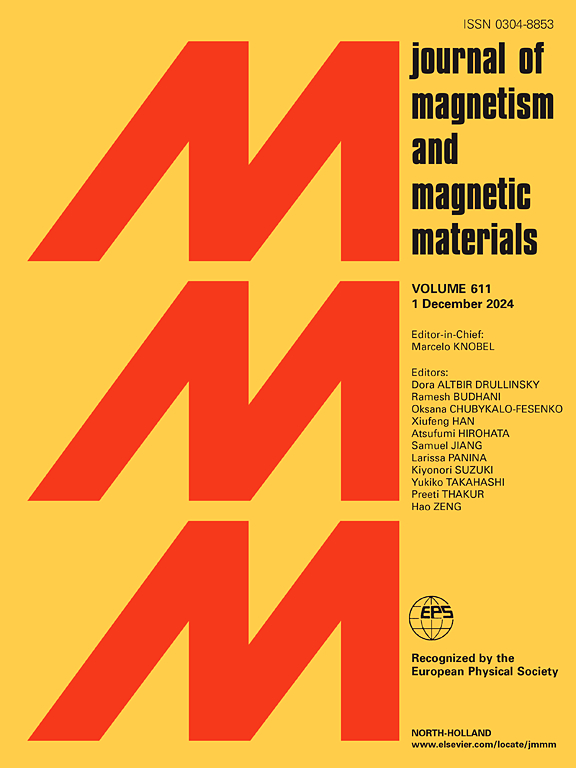The structural, electronic, magnetic and optical properties of the binary Heusler alloy CaF3
IF 2.5
3区 材料科学
Q3 MATERIALS SCIENCE, MULTIDISCIPLINARY
引用次数: 0
Abstract
The structural, electronic, magnetic and optical properties of the binary Heusler alloy CaF3 have been investigated using a first-principles approach based on density functional theory. The predicted structure of CaF3 and the structure of the Heusler alloy at pressures from 0 to 100 GPa are investigated, and it is found that the structure has the lowest energy and its most stable state is the ferromagnetic state in the whole range of pressures investigated, and verified to satisfy the stability thermodynamically, mechanically, and dynamical. Subsequently, the bandgap, the magnetic moment, and the spin polarisability of the structure near the Fermi energy level at 0 GPa, show semi-metallic properties and can be maintained up to 10 GPa. Finally, the reflectance, refractive index, and absorption coefficient are used to explain the optical properties of the structure, and it is found that the reflectance is almost close to 100% in the visible region, which implies that it can be used as a reflective material in the visible light range. The characterization study of binary Heusler alloy CaF3 research study helps in the design and optimization of spintronic devices and optoelectronic devices.
求助全文
约1分钟内获得全文
求助全文
来源期刊

Journal of Magnetism and Magnetic Materials
物理-材料科学:综合
CiteScore
5.30
自引率
11.10%
发文量
1149
审稿时长
59 days
期刊介绍:
The Journal of Magnetism and Magnetic Materials provides an important forum for the disclosure and discussion of original contributions covering the whole spectrum of topics, from basic magnetism to the technology and applications of magnetic materials. The journal encourages greater interaction between the basic and applied sub-disciplines of magnetism with comprehensive review articles, in addition to full-length contributions. In addition, other categories of contributions are welcome, including Critical Focused issues, Current Perspectives and Outreach to the General Public.
Main Categories:
Full-length articles:
Technically original research documents that report results of value to the communities that comprise the journal audience. The link between chemical, structural and microstructural properties on the one hand and magnetic properties on the other hand are encouraged.
In addition to general topics covering all areas of magnetism and magnetic materials, the full-length articles also include three sub-sections, focusing on Nanomagnetism, Spintronics and Applications.
The sub-section on Nanomagnetism contains articles on magnetic nanoparticles, nanowires, thin films, 2D materials and other nanoscale magnetic materials and their applications.
The sub-section on Spintronics contains articles on magnetoresistance, magnetoimpedance, magneto-optical phenomena, Micro-Electro-Mechanical Systems (MEMS), and other topics related to spin current control and magneto-transport phenomena. The sub-section on Applications display papers that focus on applications of magnetic materials. The applications need to show a connection to magnetism.
Review articles:
Review articles organize, clarify, and summarize existing major works in the areas covered by the Journal and provide comprehensive citations to the full spectrum of relevant literature.
 求助内容:
求助内容: 应助结果提醒方式:
应助结果提醒方式:


